Vegetable glycerin is a sweet, thick liquid that is popular in a variety of foods and often used in cannabis tincture making. Because it is pleasant tasting and doesn't burn when you swallow it or put it under your tongue, many people prefer a tincture that has vegetable glycerin as a base instead of alcohol.

Here's the catch - VG might taste great, but since it doesn't contain fat or alcohol, it is not an effective infusion medium.
In other words, the VG does not do a good job of pulling the THC, CBD, CBG or other cannabinoids from the plant material.
As a result, you don't want to use VG as your infusion/extraction solvent.
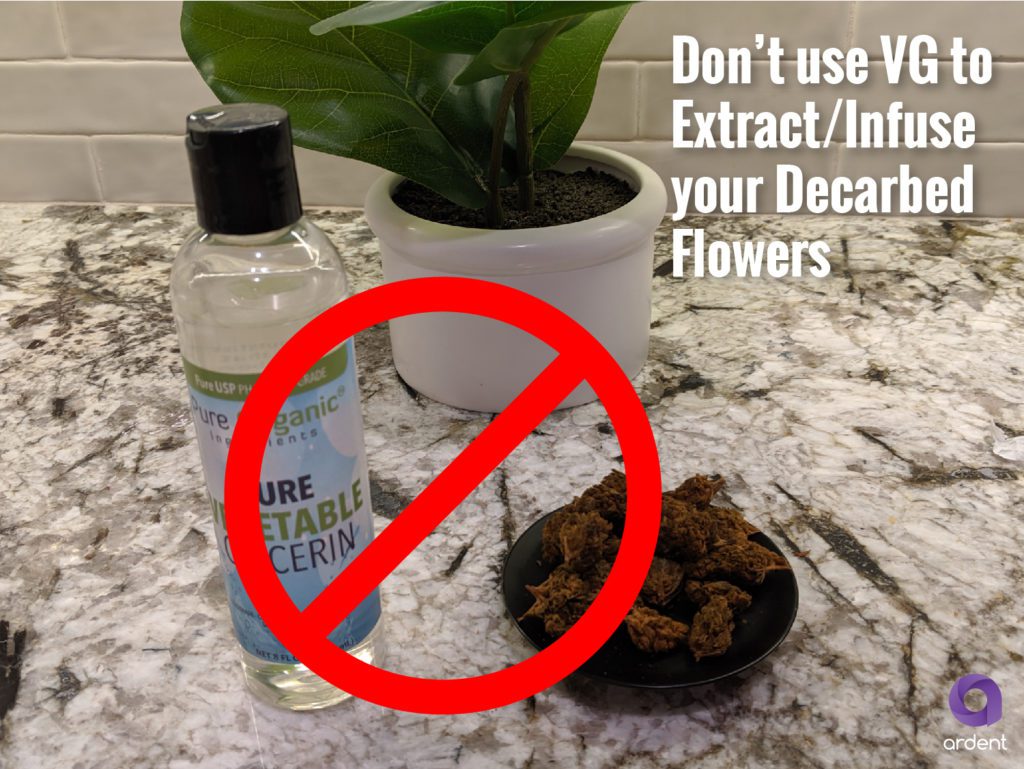
In fact, compared to alcohol and oil-based solvents, which can extract over 90% of cannabinoids from the plant, VG only pulls out less than 10%! That means if you are trying to extract cannabinoids from the activated flower into VG, you are missing out on over 85% of the available THC and will end up with very few of the cannabinoids in the final tincture. So don't expect a strong tincture if you use VG as a solvent for your extractions.
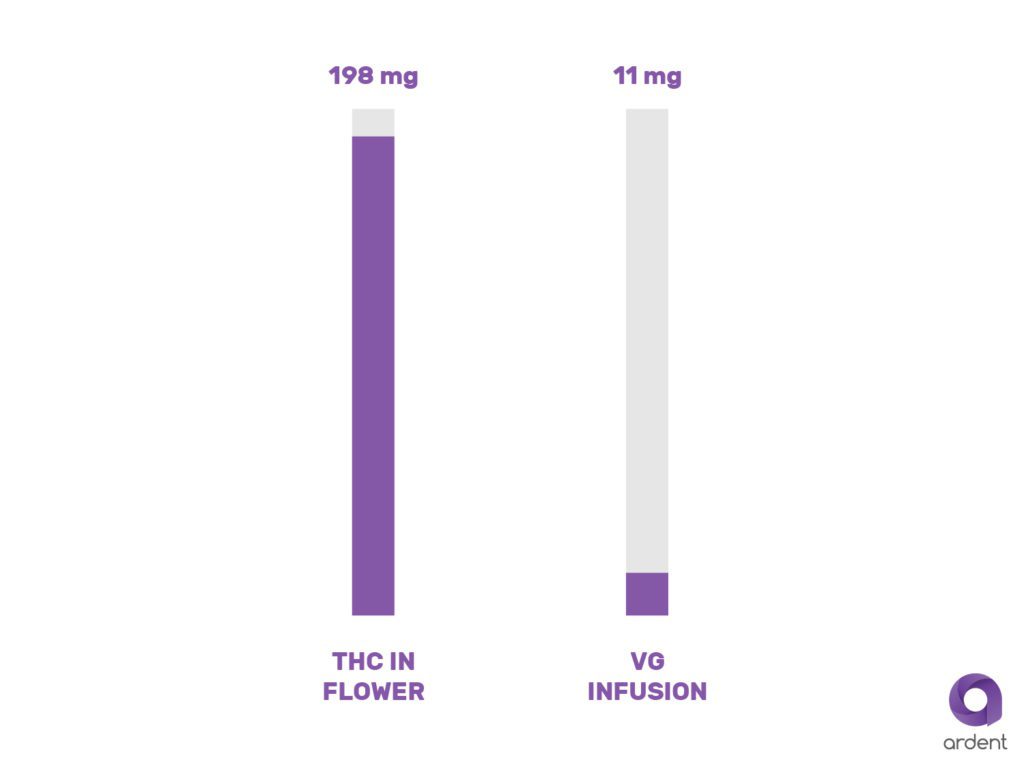
You can see in the example above, using 19.8% THC decarbed flower (198 mg per gram), the vegetable glycerin (VG) was only able to extract 11 mgs of the 198 mgs available. See the detailed test results here:
-

1 gram decarbed flower using the Nova -

1 gram of decarbed flower infused into 1 ounce VG in the Nova
So why is VG so popular, and how do you use it the right way?
VG is popular because it is mild tasting and doesn't burn your mouth when you hold it under your tongue or swallow. This makes it ideal to use as a mixing ingredient with alcohol-based extractions or with decarbed concentrates in order to make a tincture that tastes better and doesn't burn when administered.
Using Glyceric To Soften Alcohol Extractions
You can do an alcohol extraction with Everclear, which is a quick and easy process. Just decarb your flower, add Everclear and the decarbed flower into a jar and shake.

Let the Everclear and decarbed flower mixture sit for an hour or so and then strain. You'll have an active alcohol tincture that has extracted most of the THC or CBD from the plant, because alcohol is a very effective solvent. But again, this tincture will be very overwhelming taken directly, with a stinging and unpleasant taste that can also lead to alcohol intoxication if you drink too much.
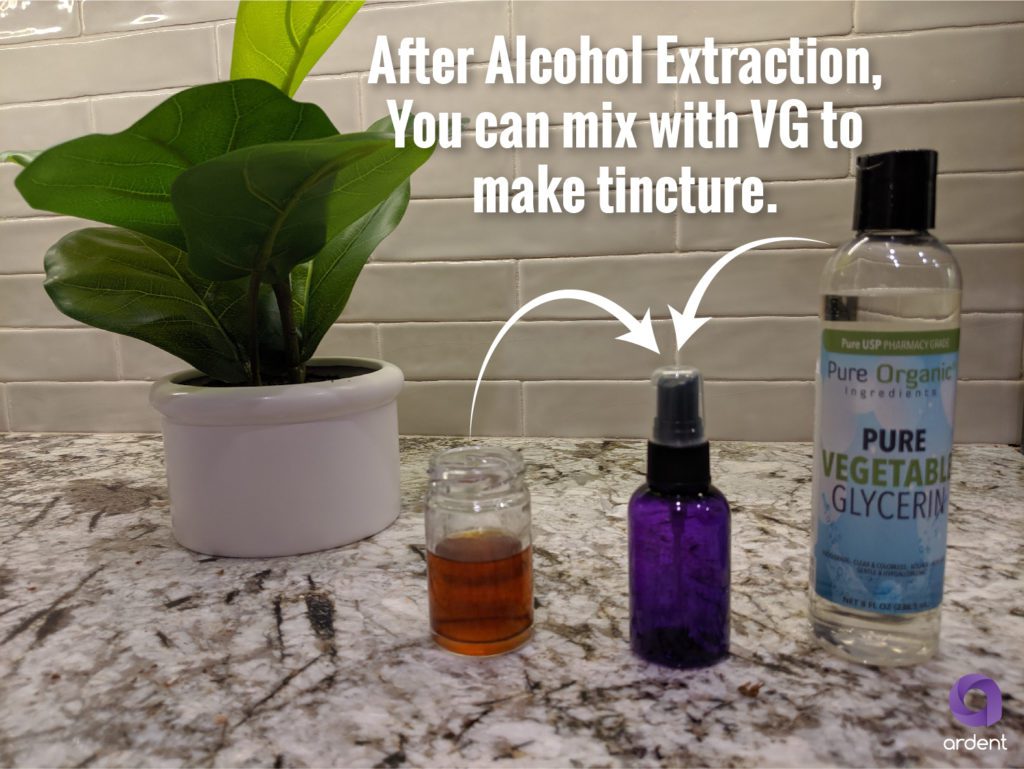
In order to make an alcohol extraction taste more smooth and contain less alcohol, VG can be mixed in to lower the alcohol content and make the tincture taste better. You could also let your alcohol mixture stay out overnight to allow the alcohol to evaporate and then add the VG. The more alcohol you let evaporate, the more concentrated and potent the extraction will become. You can mix that concentrate with the VG to make a very smooth and more potent tincture.
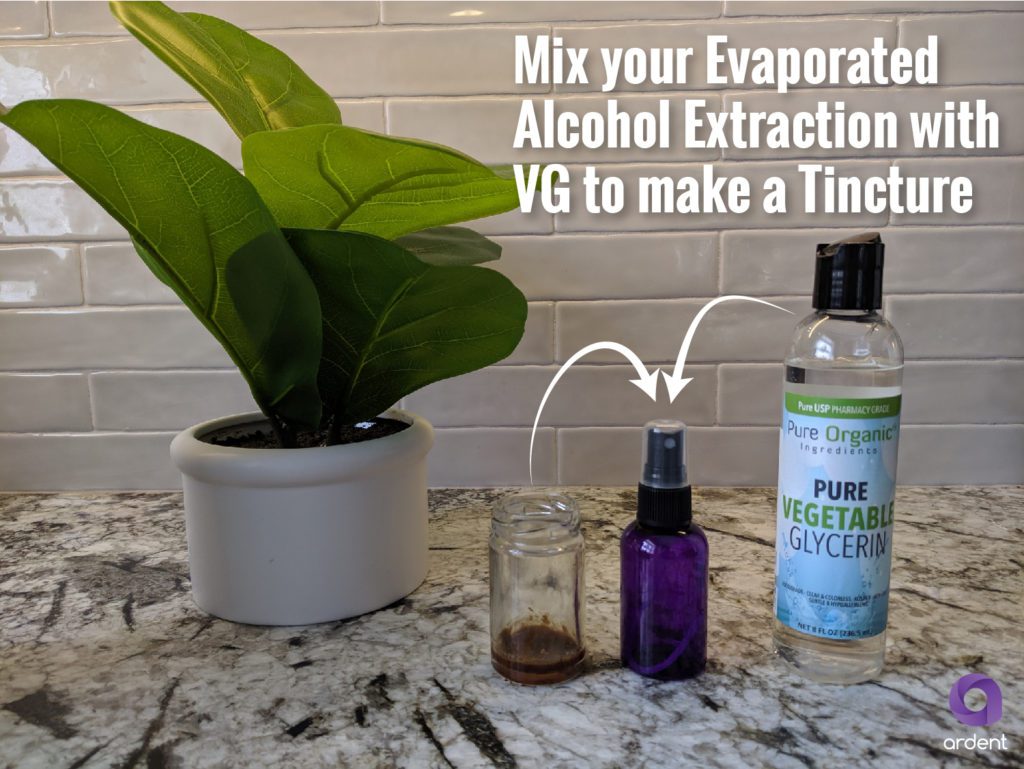
Using Glycerin To Make Tinctures With Concentrates
If you are starting out with a concentrated form of cannabis like wax, shatter or rosin from the beginning, VG can also come in handy to transform the concentrate into a tincture. After you decarboxylate your concentrate, you can mix the decarbed concentrate with the VG in order to create a custom tincture. Make sure that you are mixing the ingredients warm so they can blend well for a consistent dose. Adding a small amount of coconut oil to the decarbed concentrate before mixing with the VG can help with blending.
Decarbing and blending concentrates is an easy way to make potent tinctures.

As long as you remember that VG is not a good vehilce for infusing with flower (it does a poor job of extracting the THC or CBD from the flower) but is a good option for mixing to make a tincture with an alcohol extraction or a cannabis concentrate, you'll do just fine.
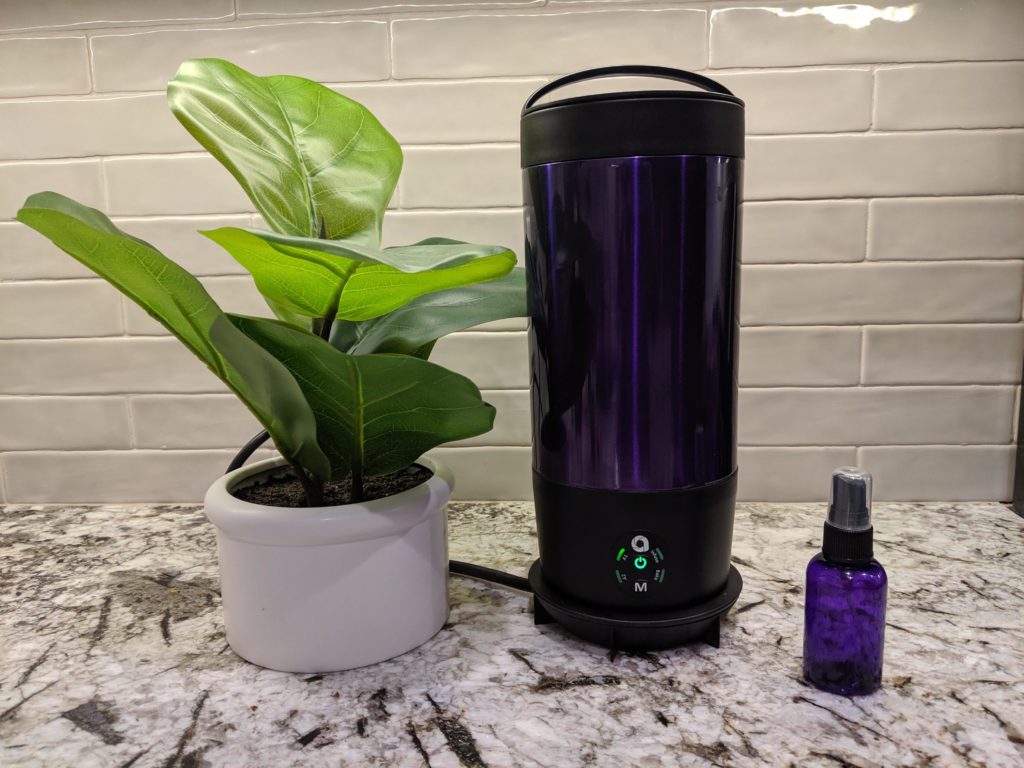
Use FX or Nova to make your decarbing and infusing dreams come true at the press of a button. Discreet activation of all strains and materials.
